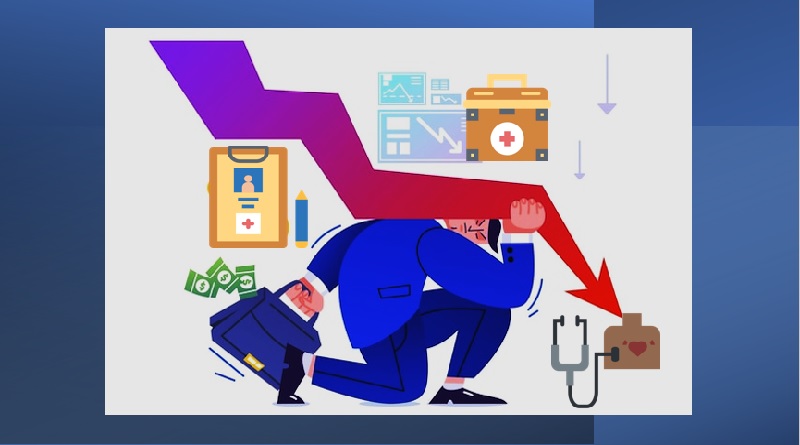Many resources have been devoted by healthcare professionals to electronic record-keeping, including server data, processing power, etc. This strategy does work, but if there is a lot of data to sift through or the data is old, it might be challenging to find the pertinent information.
Hospitals want to alter healthcare delivery, boost patient autonomy, and spend less money on healthcare as a share of the economy as a result of the COVID-19 pandemic, rising rates of heart disease, and other illnesses. All of this is possible with real-time data collection and AI machine learning. Professionals in clinical business intelligence, a developing subject in the STEM fields, concentrate on gathering information at the point of care, where it is appropriate, pertinent, and easy to access.
Examples of Clinical Real-Time Data Mining
By gathering real-time information on the prevalence of clostridium difficile, Salam Health, a stomach illness acquired in a hospital, has taken the lead in clinical business intelligence. After noticing that 200,000 patients each year died from infections, doctors started using information systems to assess how infections performed in real-time. This is different from the conventional 60-90 retrospective technique. It was observed after some staff infection monitoring that this real-time data tracking has shown to be essential for combating C. difficile, directly lowering HO-CDI rates.
A paper produced by Ziemssen, T. et al. demonstrated a strategy to tackle multiple sclerosis using real-time data mining. A software/ machine was built to generate a classification model founded upon the signs and symptoms associated with multiple sclerosis. It will classify and prejudge the severity and progressive nature of several symptoms, such as paresis, diplopia, numbness, and more, and create an algorithm to diagnose.
After combing through the electronic health records and generating this model, the P-score was low enough, and a positive predictive value rate was attained. This study uses other afflictions and shows the grander audience just how vital a role AI can take in monitoring human health.
AI Learning in Healthcare
AI and machine learning have been in use for the past decade and, since then, have acted as our primary modus for attaining trending data in health care facilities. It is important to note that this approach is not only applicable to the monitoring of disease and infection.
Real-time data collection has been used in managing hospital beds, surgical day care units (procedural suites for extended periods of recovery), the supply and demand of bays, forecasting the most likely day of discharge for a given patient, and more.
Rule-based expert systems, founded upon an assortment of “if-then” rules, are helpful in the acquisition of real-time data. This rule-based system is often integrated with the hospital’s electronic health records (EHRs). This further lead to “clinical decision making” on the part of the machine, to be interpreted by the leading physician. Though AI is proficient with data mining, tracking, and establishing patterns using a heavy mass of data, human experts and engineers are still required to maintain these machines. Moreover, many of the moral and ethical decisions that physicians face cannot be tackled by these binary systems.
The role of The Internet of Things (IoT) in Real-Time Data Acquisition
The internet of things (IoT) is a platform that connects all smart devices together and makes use of their sensors to collect data about the environment. This strategy broadens the purview of conventional medicine and employs massive data streams for algorithmic processing and judgement in order to maximise patient health. This area of the healthcare market, sometimes referred to as “The Internet of Medical Things,” aims to surpass outmoded analogue devices like ultrasound probes and bulky sphygmomanometers and replace them with smart medications, robotic surgical instruments, and other similar devices that have the capability of transferring data into the cloud.
Patients with smartphones or other smart device brands can now use high-speed broadband wireless to upload intel on whichever disease they are being treated for. The data-assisted analysis founded upon this real-time data acquisition will make an intelligent diagnosis and treatment avenues, culminating in AI machine learning, the internet, and real-time trends as the foundation.
A paper produced by Wang P et al. introduces the process of machine learning through density-based spatial clustering with noise (DBSCAN). This aims to transform data acquisition and improve clustering results. Doctors and nurses use this to collect patient data while the algorithm models trends (rate of disease, equipment usage, etc.), knowing what abnormal points to avoid and what outliers should be deleted to avoid false clusters.
Making treatment options with the help of comparisons between clustered data and other sources. Wang P et al. came to the conclusion that the outcomes of smart diagnosis could lead to cleaner facilities and more knowledge about hospital administration.
The adoption of real-time data in all hospitals and clinics is stressed in this research. Although a single intervention does show some promise at the institutional level, its true efficacy won’t be known until it has been tried and studied in numerous centres. The only way to contrast and make judgments about the pertinent data is in this way.






